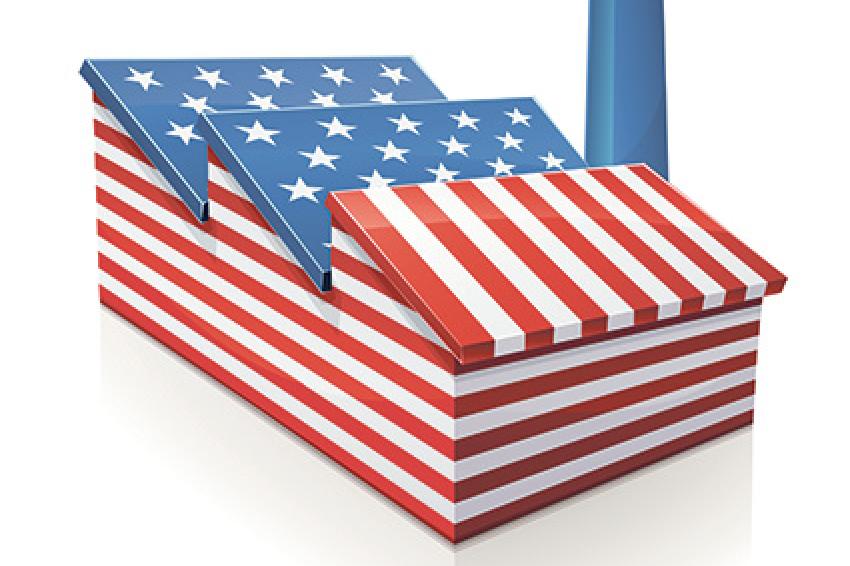U.S. API Manufacturing and Sustainability
Region Narrows Focus on Specialty Niche Areas
Moving Away - Many would argue that the future of pharmaceutical growth in the coming years will come from emerging markets; U.S. pharma sales have been sluggish recently with a slight 1-4% CAGR expected this year. The pharmaceutical spending in the U.S. however continues to surpass $325 billion per year and although the U.S. is a major consumer of pharmaceuticals, much of the manufacturing industry producing these active pharmaceutical ingredients (APIs) has drifted away from the U.S.
As costs start to rise in the regions that once could offer significantly lower manufacturing costs, the U.S. might once again be an attractive base for pharmaceutical ingredient production. This is especially true for the generic medicines industry that is expected to expand its presence in the U.S. by 2015 to make up 87% of prescriptions and could see increased volume from the Patient Protection and Affordable Care Act.
Eastbound
The API and fine chemical industry along with other sectors tied to U.S. pharmaceutical manufacturing have been continually offshored to take advantage of savings on foreign production and labor costs. Most companies from regulated markets (such as U.S. and EU) have some form of manufacturing production based abroad.
In China, the government continues to invest strongly in the local manufacturing industry, and the scale of production is immense for capacity. There is also available an untapped portion of the population for under diagnosed or under prescribed patients. China also has easier access to base chemicals and intermediates, as well as better infrastructure than India. The Chinese market is set to grow at a rapid pace and is estimated to become the world's second largest market by 2014. The country sees continued investment not only from within but from other neighboring countries. For example Taiwan-based Scinopharm just announced completion of an API facility in Changshu with plans to manufacture API for domestic and international markets in accordance with CFDA regulations.
Similarly, savings can be found in India, where R&D costs half of what it does in the U.S. and there exists an immense amount of local labor and chemical manufacturing talent. The number of FDA approved facilities is large and continually growing.
Although there are a myriad factors for relocation of API production to India and China, there are also obstacles in these regions. Foreign project management is still necessary which can negate a component of cost savings and lead to delays. Additionally, there have been infrastructure issues in India and increasing environmental compliance costs in China. The skilled labor force, which is still considerably cheaper is seeing salaries rise, increasing faster than those in regulated markets. Finally, many companies in India and China see high turnover rates that add to labor costs and pose a possible threat to IP information security.
Thomson Reuters assesses the capabilities and experience of API manufacturers according to a proprietary scheme based on objective regulatory data. Companies range from those focused on supplying their local market to companies with years of experience supplying highly regulated markets. Although India and China lead in the number of total API manufacturers, there is almost an equal amount of companies that have years of experience supplying API to regulated markets, As companies in India and China invest in upgrading their facilities and gain more experience supplying regulated markets these companies could move into the other categories (fig. 1).
U.S. Based Investments and Partnerships
The investments into API facilities and capabilities in India and China might seem to overshadow upgrades or investments in the U.S. However, U.S. company investment is focused on specialty niche areas or progressive medicines. Small to midsize U.S. contract research or manufacturing organizations (CROs/CMOs) are likely going to see increased business for bringing new investigational drugs through clinicals, to scale up, and commercialization that will likely be picked up by larger pharma companies looking to insulate their pipelines.
There are a number of agreements between foreign MNCs partnering with companies in the U.S. for the supply and manufacture of API, access to biotech pipelines, and even U.S. companies looking to increase the vigor of their manufacturing capacity in certain technologies. Some of these include Aspen's acquisition of Merck's API facilities in the U.S., Otsuka's acquisition of Astex, and AstraZeneca's acquisition of Pearl Therapeutics.
U.S. facilities are also investing and upgrading their facilities in response to an increased demand. Cambridge Major merged with AAIPharma Services to boost capacity, while Cedarburg Hauser has upgraded facilities to increase production capacity. Albemarle, Almac, and Sigma-Aldrich have all invested to grow their custom and high potency manufacturing capabilities within the U.S. U.S. based companies can also continue to leverage their knowledge with well defined and heartily backed R&D companies
U.S. Vitality
Innovation is where the strength lies for the U.S. companies manufacturing in the U.S. can find new facets of growth by increasing focus in areas such as continuous processing as opposed to traditional batch processing to increase efficiency. Biologics, biosimilars, and the pairing of high potency APIs for personalized medicine regimens that are more difficult to reproduce should also see continued investments in the U.S. Even reducing the number of steps needed to get to the final form of API before its reaction can promote better sustainability of the U.S. API manufacturing industry.
As patented drugs become subject to generic challenges and companies look to increase the integrity of their pipelines, larger companies backed by strong R&D budgets will continue to seek out innovative new therapies that will be harder to replicate. This can be seen with increased focus and investments into biologics, oncologics, and antibody drug conjugate (ADC) based medicines. The U.S. API market will sustain growth from the manufacturing of specialty drugs, increased focus on the biologic medicines sector, startup biotech companies, and the established regulatory system that promotes quality medicines.
Contact
Thomson Reuters
215 Commercial Str.
Portland, Maine 04101
+1 207 8719700
+1 207 8719800






